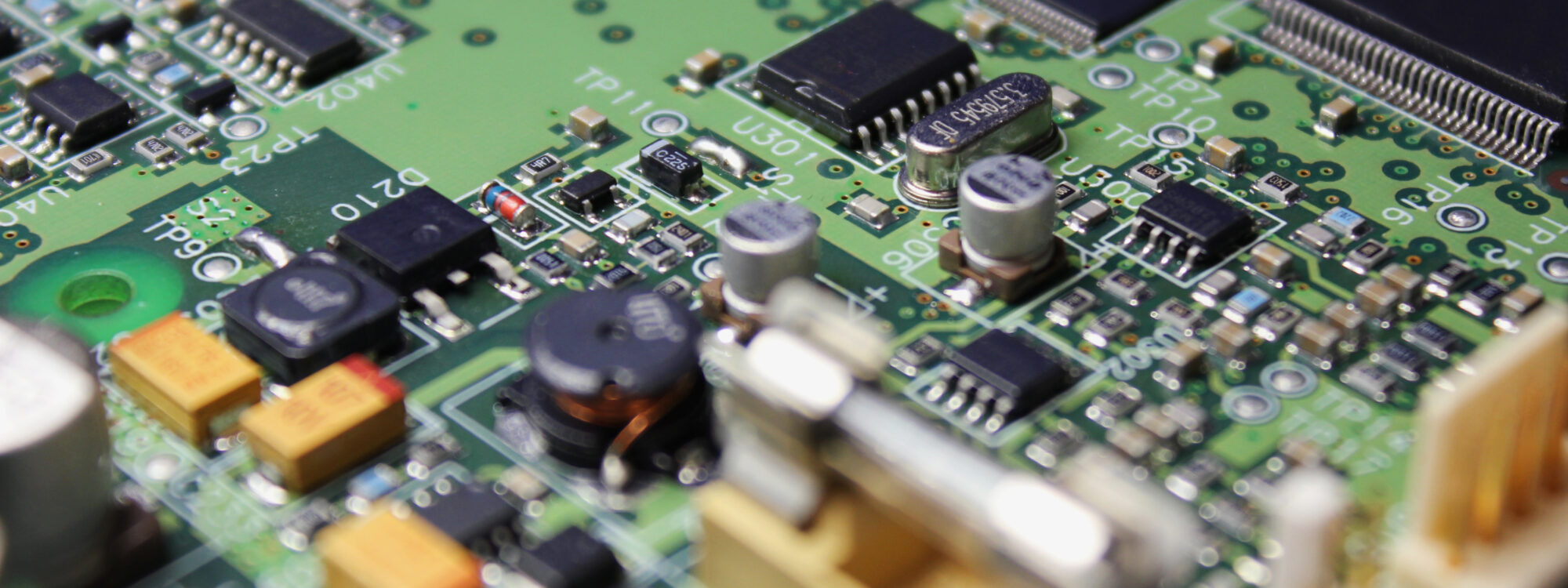PCB encapsulation with ALD vs. parylene coating
The durability of electronic devices in harsh environmental conditions is of major interest in industrial and consumer electronics. In electronic applications, electronic assemblies are frequently exposed to corrosive environments such as high temperatures, water, steam, acids, organic solvents, salt, etc. and combinations thereof. These can cause rapid failure of electronic components and circuits on the electronics assembly. Electronics may be housed within a protective case or enclosure designed, in part, to limit exposure of the electronics assembly and components to water and other corrosive solids, liquids, and gases. These protective enclosures typically do not provide complete protection and add volume and mass to electronic products.
An alternative to corrosion-resistant enclosures arises from encapsulating the underlying electrical components within device enclosures. For example, a thin film or protective coating can be applied to the electronic circuitry and/or components inside of an electronic device. This protective coating fully encapsulates and protects the electronic device from corrosive chemical species without requiring a bulky external protective case. Such corrosion-resistant coatings are desirable for protection against incidental or accidental exposure to water and other corrosive species. For instance, a thin film coating may protect the electronic components of a consumer electronics device from corrosion, and eventual failure, due to high humidity, rain, spilled drinks, immersion or even full submersion in water. Several different types of coatings are typically used for this application such as parylene, acrylics, utherane or epoxy.
Typical challenges with parylene coatings in PCB protection
Parylene is quite popular a protective coating, but despite its numerous benefits, it shares common disadvantages inherent with the other polymers of the same family. For starters, parylene is expensive and requires specialized CVD coating equipment. As it is chemically inert, any rework is time consuming and expensive. Impeccable cleaning and materials’ compatibility need to be checked to avoid delamination. Parylene vapors penetrate any uncovered regions and any contaminant will interfere with the positive interaction between the chemical reactants and a non-volatile solid film on the substrate. It is not only a relatively soft film, but it also adheres poorly to many metals used in PCBs. Demanding application require thick coatings that add weight and provide little resistance to UV light and may even change color upon exposure.
ALD moisture barriers offer many benefits over parylene
Atomic layer deposition (ALD) achieves the same results than parylene without the drawbacks, and every ALD monolayer is literally a billion times better. For example, ALD deposited Al2O3 is an excellent moisture barrier and has been reported to achieve a water vapor transmission rate (WVTR) of about 10-5 g/m2 ·day. The film is highly conformal and pin-hole free when compared with some other vapor phase deposition techniques. In recent years, the demand for ultrahigh water vapor barriers has drastically increased due to the continuous development of organic devices. Highly efficient organic solar cells and organic light-emitting diodes can only achieve mass production if certain product lifetimes are reached with affordable encapsulation systems. Estimations and measurements show that reasonable lifetimes of more than 5 years require WVTR of a complete encapsulation around 1 × 10-5 g/m2 ·day. This is roughly equivalent to a monolayer of water permeating into the device in a month. Still, non-optimal processing parameters, particles or certain environmental conditions can easily lead to barrier shortcomings.
Extra benefits with ALD laminate coatings
Under certain conditions, whereas a single layer of ALD may not be enough, ALD can be combined with other conformal coatings by using multiple different materials in the ALD process. In addition to the deposition of single oxides like alumina, it is possible to deposit film laminates by alternating layer composition at each cycle, and even optimizing individual layer thicknesses and structures if needed. Laminates and alloys can be tailored to reach the desired properties and performance. Laminate structures have shown very good results in corrosion protection and it is possible to achieve even higher flexibility by capping the ALD with a protective layer to resistant to handling.
Moreover, recently implemented environmental protection regulations phased out the usage of lead in mainstream electronics, consequently resurrecting the risks of tin-whisker driven electrical circuit failure. Unfortunately, today’s advanced, sub-millimeter pitch circuitry is much more prone to whisker-driven failure than its half-a-century-ago prior predecessors. Spontaneously growing whiskers often appear on tin (Sn), cadmium (Cd) and Zinc (Zn) parts and finishes. Tin features are extensively used in the electronic industry to provide electrically conductive, corrosion protected soldering surfaces. Research indicates that whiskers are driven by compressive stress to extrude through cracks in the native tin oxide.
In accordance with the failure mechanism of tin soldering, a thin ALD layer maybe deposited on a metallic substrate to suppress whisker growth on that substrate. The ALD layer may be a laminate comprising of an adhesion layer, and several alternating middle layers. The adhesion layer is formed by first depositing Al2O3. The middle layers maybe be of alternating layers of Al2O3 and TiO2 for example. Advantageously, the above described ALD layers induces enough tensile stress on the underlying metallic feature, which, in turn, acts to suppress the growth of metallic whiskers.
High-capacity batch processing ALD for PCBs from Beneq
Proper environmental encapsulation of circuit boards and tin whisker suppression are essential for assuring high reliability in electronics applications of all types. Beneq’s proven ALD encapsulation method offers extended product reliability, safety improvement, and long-term cost savings to PCB manufacturers. Cost-effective processing of large batches of PCBs is currently available in the largest and longest running ALD processing reactors of its kind: The Beneq P800 and Beneq P400 series reactors, running strong at Beneq, the Home of ALD.

